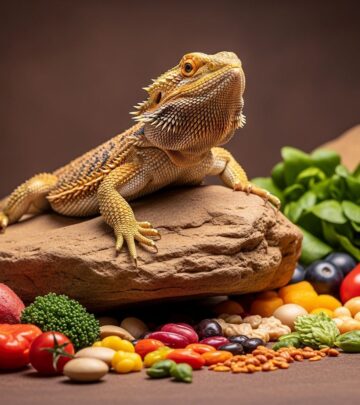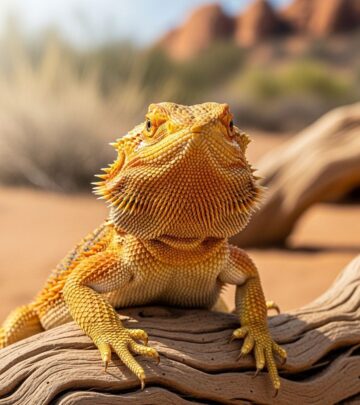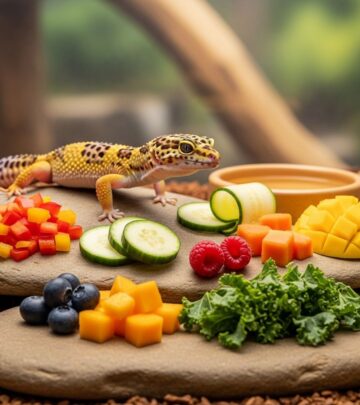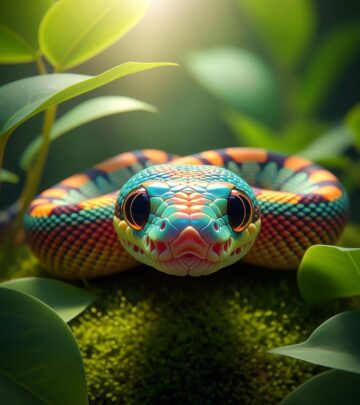Green Iguana Care: Habitat, Diet, Behavior & Health Guide
Climbing branches, varied greens, and checkups foster a confident, strong iguana.
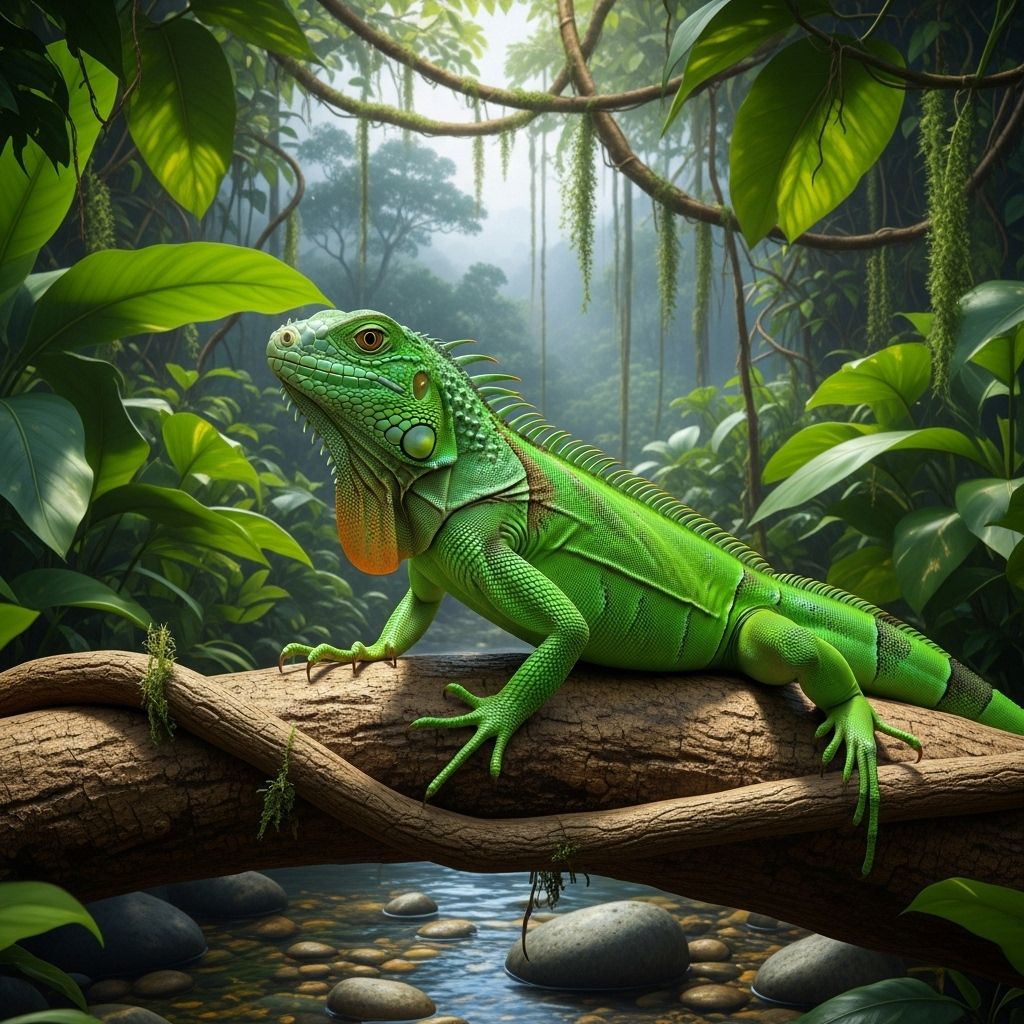
Green iguanas (Iguana iguana) are among the most recognizable lizards in the pet world, famous for their striking appearance and sizeable presence. Native to Central and South America, these arboreal reptiles require specialized care and a strong commitment from their owners. This guide covers all essential aspects of green iguana care—habitat, diet, behavior, handling, and health—empowering you to give your iguana a long, healthy life.
Table of Contents
- Species Overview
- Habitat and Enclosure Setup
- Diet and Nutrition
- Behavior, Temperament, and Handling
- Health and Veterinary Care
- Daily Care and Maintenance
- Frequently Asked Questions (FAQs)
Species Overview
The green iguana is a large, primarily herbivorous reptile found in the wild across much of Central and South America. Despite their name, coloration varies broadly—some individuals appear blue, red, yellow, or even nearly white, depending on their origin and genetics. Adult green iguanas can grow between 4 to 6 feet long (including tail) and can live for 15 to 20 years or more with appropriate care.
They are arboreal, spending most of their lives in trees, and require extensive space and opportunities to climb. These reptiles are not low-maintenance—their size, environmental sensitivity, and dietary needs make them best suited for experienced reptile keepers or highly committed beginners .
Habitat and Enclosure Setup
Providing a proper habitat is crucial for your green iguana’s health and well-being. Wild iguanas live in tropical forests and spend most of their time high in the canopy. Mimicking this environment in captivity is essential.
Enclosure Requirements
- Size: Adult iguanas require a large, vertical enclosure: minimum 6 ft high x 4-6 ft long x 4 ft deep. Bigger is always better. Hatchlings can be housed in smaller enclosures but will outgrow them quickly .
- Structure: Provide sturdy climbing branches, shelves, and platforms to support arboreal activity. Ensure all materials can handle the iguana’s weight.
- Security: Enclosures must be escape-proof and well-ventilated, with a secure top or door.
- Lighting: UVB lighting is non-negotiable—install a high-quality UVB bulb positioned 12-18 inches from basking areas, on for 10-12 hours daily. This assures vitamin D3 synthesis and healthy calcium metabolism .
- Heating: Maintain a daytime gradient of 85-100°F (29-38°C) at the basking site, and 75-85°F (24-29°C) in the cooler area. Nighttime temperatures should not drop below 70°F (21°C).
- Humidity: Green iguanas require 70–90% humidity. Use a large water dish for soaking, frequent misting, and live plants to support humidity; monitor with a hygrometer .
- Substrate: Use non-toxic, non-particulate substrates such as reptile carpet, newspaper, tile, or paper pellets. Avoid sand, mulch, wood chips, and any substrate that might be ingested .
Decor and Enrichment
- Branches: Place strong branches diagonally and horizontally to allow for climbing and basking. Space them away from heat sources to avoid burns.
- Hides: Add large, secure hiding spots such as half logs or artificial caves to reduce stress and provide privacy.
- Plants: Use live, non-toxic plants or artificial foliage to create a naturalistic, enriching environment.
Sample Enclosure Table
| Feature | Minimum Standard | Notes |
|---|---|---|
| Height | 6 ft (1.8 m) | Vertical space crucial |
| Temperature | Basking: 95°F; Cool: 75°F | Day-to-night gradient required |
| Humidity | 70–90% | Frequent misting, large water dish |
| Lighting | UVB + UVA | 10–12 hrs daily; replace bulbs every 6–12 months |
| Substrate | Reptile carpet, newspaper | Avoid loose particulate bedding |
Diet and Nutrition
Green iguanas are strict herbivores. They depend on a diet rich in leafy greens, vegetables, and occasional fruits. An improper diet is the most common cause of health issues, including metabolic bone disease, kidney failure, and malnutrition.
Dietary Staples
- Leafy Greens (daily): Collard greens, dandelion greens, mustard greens, turnip greens, escarole, endive
- Vegetables (daily): Squash, bell peppers, green beans, parsnip, okra, snap peas, butternut squash
- Fruits (occasionally, <5% of diet): Papaya, mango, berries, melon, apple (seedless)
- Avoid: Spinach, iceberg lettuce, rhubarb, animal proteins, citrus fruits, processed foods
Chop food into bite-sized pieces and offer a variety daily. Dust meals with calcium powder (no added D3 if using UVB light) several times per week, and a multivitamin weekly.
Behavior, Temperament, and Handling
Green iguanas are intelligent, complex reptiles. Their temperament often changes with age, season, and environment. Proper socialization and handling are key for bonding and safety.
Socialization and Training
- Settling In: Allow your new iguana about two weeks to acclimate before handling. Observe daily routines and start with gentle interaction.
- Building Trust: Talk softly, perform husbandry tasks in view, and let your iguana observe you. Once eating well, begin slow, positive handling sessions.
- Handling Techniques: Always lift from below, supporting the entire body. Avoid grasping from above, which provokes fear and aggression. Never squeeze or forcibly restrain.
Taming is a gradual process, often measured in months. Patience and consistency are rewarded by a bolder, more interactive companion .
Common Behavioral Traits
- Arboreal Instincts: Frequent climbing, exploration, and basking are normal.
- Possible Aggression: Some iguanas are territorial and may display head bobbing, tail whipping, or defensive postures, especially during breeding season.
- Seasonal Changes: Male iguanas become more territorial and less tolerant during the breeding season.
Health and Veterinary Care
Green iguanas are susceptible to various health concerns if not cared for appropriately. Regular veterinary checkups and attentive daily observations are critical for long-term wellness.
Signs of a Healthy Iguana
- Active, alert behavior
- Clear, clean eyes and nostrils
- Smooth, intact skin without lesions or areas of discoloration
- Firm, well-formed droppings
- Good appetite
Warning Signs: When to Consult a Vet
- Lethargy, lack of movement
- Incomplete shedding (“retained shed”)
- Loose stools or diarrhea
- Open-mouth breathing, mouth ulcers
- Appetite loss, sharp weight loss
- Swelling, lumps, skin discoloration
- Difficulty moving or using limbs
Common Iguana Illnesses
- Metabolic bone disease (from poor calcium, UVB deficiency)
- Kidney disease (often from chronic dehydration, improper diet)
- Bacterial infections (wounds, abscesses)
- Mouth rot (infectious stomatitis)
- Bladder stones, dystocia (egg binding in females)
- Foreign body ingestion
Veterinary Visits
- Annual Exams: Schedule yearly checkups, including physical evaluation, fecal testing, and blood tests as recommended.
- Travel: Transport iguanas securely in a ventilated pet carrier lined with soft towels. Use a safely wrapped heat pad in cold weather to avoid stress and hypothermia.
Daily Care and Maintenance
Successful iguana keeping means establishing a consistent care routine, including monitoring habitat parameters and the animal’s condition.
- Temperature & Humidity: Check both at least twice daily. Ensure basking and ambient temperatures remain within recommended ranges. Mist enclosure or use humidifiers to keep humidity optimal.
- Cleanliness: Remove uneaten food and droppings daily. Clean water bowl and replace water for soaking.
- Substrate: Spot clean daily; change weekly or if soiled to prevent bacteria buildup.
- Shedding: Maintain humidity to support normal shedding. Iguanas shed in patches—avoid excessive handling during this time.
- Nail Trimming: Regularly inspect and trim nails to prevent overgrowth or injuries. Consult an exotic veterinarian if unsure how to trim safely.
Frequently Asked Questions (FAQs)
Are green iguanas good pets for beginners?
Green iguanas are a challenging pet, best suited for well-informed, committed owners. Their large size, strict environmental needs, and potential for aggression make them difficult for beginners without significant research or reptile experience .
How long do green iguanas live?
With optimal care, green iguanas can live 15–20 years; some have been known to exceed two decades. Improper care frequently shortens lifespan.
What is the most important part of iguana care?
The most critical factors are proper habitat, UVB lighting, humidity, and a balanced, plant-based diet. Neglecting any of these can rapidly lead to illness.
Do green iguanas like to be handled?
Some iguanas tolerate regular handling after positive, gradual socialization, but many are defensive or territorial by nature. Always observe your iguana’s reactions and respect its boundaries .
Can green iguanas free-roam in the house?
Free-roaming is possible in very controlled, iguana-safe environments with excellent supervision. Dangers include other pets, electrical cords, and inappropriate temperatures. Most owners establish a contained “iguana room” or dedicated habitat instead .
How do I know if my iguana is healthy?
Monitor for clear eyes, consistent appetite, healthy skin, and normal activity. Regular exotic veterinary care is highly recommended for early disease detection.
For more details on iguana care, always consult an experienced reptile veterinarian or herpetology specialist. The information above offers a comprehensive starting point for responsible iguana ownership.
References
- https://www.petmd.com/reptile/green-iguana-care-sheet
- https://reptifiles.com/green-iguana-care-sheet/
- https://www.norcalherp.com/uploads/8/0/8/3/80835988/online_version_greeniguana3.pdf
- https://reptilesmagazine.com/green-iguana-care-sheet/
- https://www.youtube.com/watch?v=wxCKYImEHMQ
- https://www.corhs.org/uploaded/eaff735f5d673773b3800642d4f0a6fe_CoRHS%20Iguana%20Care%20Sheet.pdf
- https://www.thebiodude.com/blogs/lizard-caresheets/all-about-iguanas-what-you-need-to-know-about-this-amazing-dinosaur
- https://www.birdexoticsvet.com/iguana-care-tips
Read full bio of medha deb







